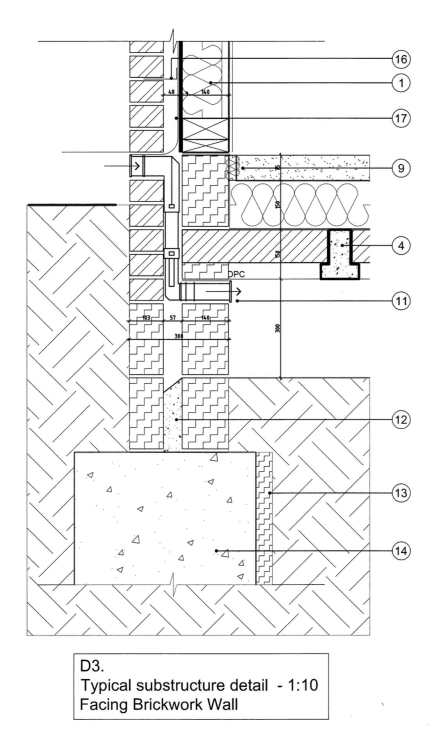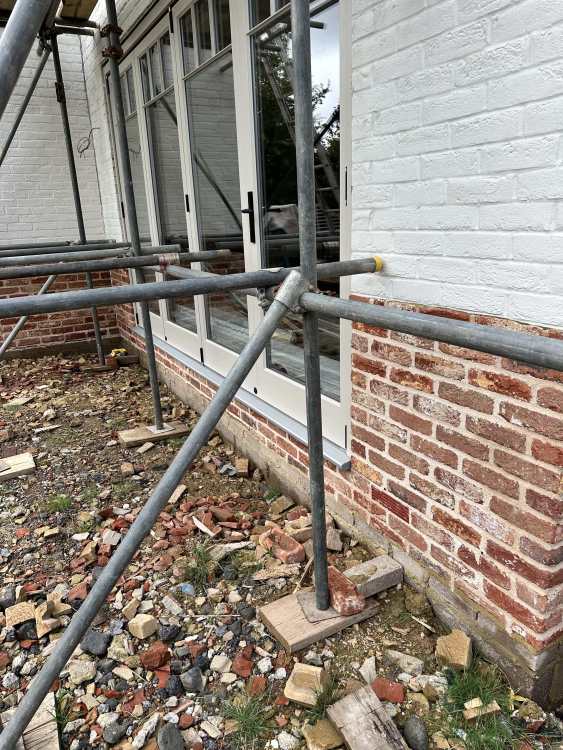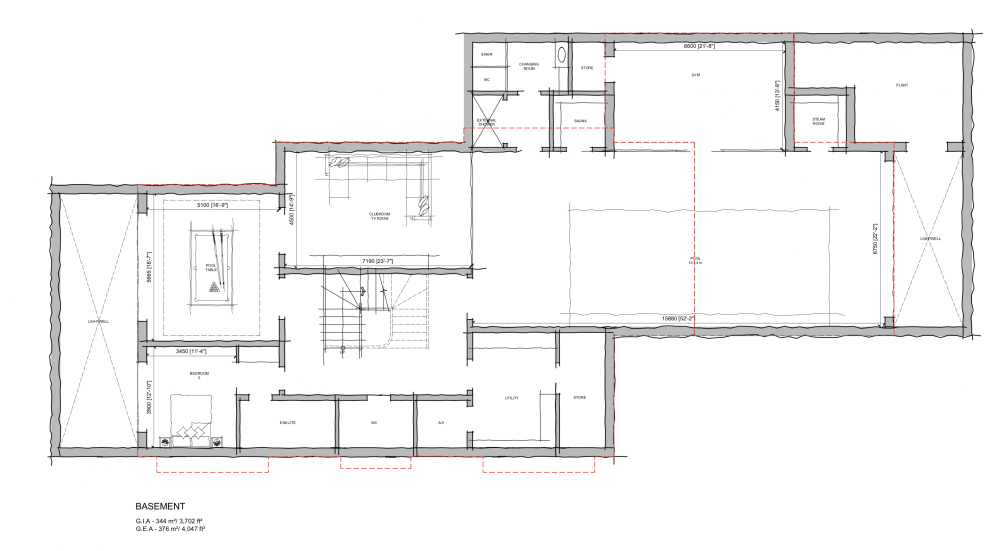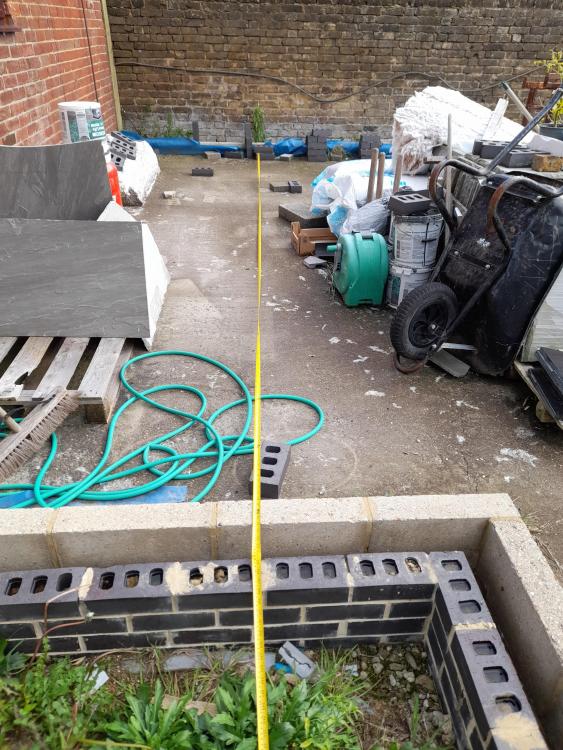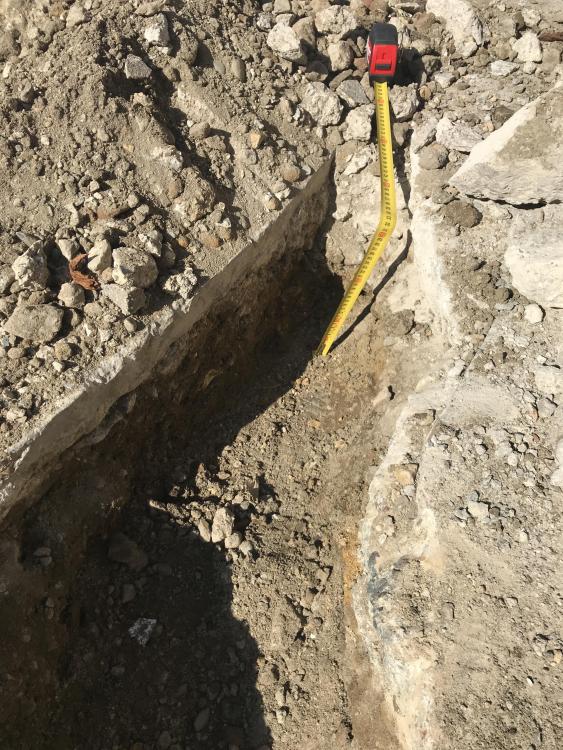Search the Community
Showing results for tags 'groundworks'.
-
Our under ground vents were designed by our architect to sit externally a course below the finished internal floor height, and this is what was built. See attached drawing and picture. We are now onto the patio, and want our patio level to be the same as our finished internal floor, ie no step down, however if we do this we will block the vents! What is the solution? Our landscaper says the vents should be above the floor level. Our builder and architect say all new build under floor vents are positioned like this…
- 1 reply
-
- groundworks
- ventilation
-
(and 2 more)
Tagged with:
-
Hi guys Would really appreciate any advice on building a big basement with indoor pool (400sqm, 3m high ceilings, 10m*4m pool) The swimming pool would have 1m below ground and 50cm above ground level Early considerations include: the plot is a 1.1acre and luckily there are no considerations of neighbouring boundaries etc access is good Ground investigations have been completed for my house, and the house next door, they show the same thing more or less, these can be uploaded as requested Without going into loads of detail, summary: Windlesham formation units: silty glauconitic sand to around 4.5m, then clay Encountered water around 2-2.5mbgl in areas (not everywhere) On the basis of the above shoring recommended, perhaps sheet piling needed (ground collapses around the dig quite fast in areas) dewatering needed (it looks like there is perched water around 2-2.5mbgl) We (the groundworks team and my appointed SE) have concluded so far that: We dig out 1.5mbgl - this area would be stable. Then dewater and pile below this (keeps piling cost down). We need to get to around 4.5-5.5mbgl for the basement (to include services etc and headlight approx 3m and 1m for the pool) Main areas of advice please to relate to potential costs of: Potential Piling needed Basement construction Also any recommendations of contractors around the Windlesham, Surrey area? I have received a quote from Glatharr prefabricated basements at around £500K (10 week build time) Other traditional builds are running at around £400K-£1mill! (4-6months build time) Prices include waterproofing and 10 year warranties etc Everyone so far has recommended against ICF, although the nudura rep seems to think its totally possible I think I want to go with the germans - because: They are German This is specialised work Basements leak in our area The house on top will only be as good as the basement below etc Much quicker build and I want to get on with the rest of the house BUT Is £500K a crazy price? Many thanks in advance for any help/advice Best Raju
- 19 replies
-
- sheet piling
- ground investigation
- (and 13 more)
-
Installing drain/soil pipe through an existing foundation
D2bee posted a topic in Introduce Yourself
Hi All, I have been reading some stuff on here and appreciate the generosity of you all in this community. This is my first self build/major extension project and will appreciate all the help available from all you Knowledgeable and experienced people are out there. I bought a property which the previous owner had commenced a double storey extension project with foundations in situ. However there is need for a ground floor toilet for which drainage provision was not made before the foundation was completed. My question is this: How can the drainage/soil pipe be inserted through the foundation to the manhole (located next to the foundation) without compromising the integrity/strength of the foundation? Any ideas will be most appreciated. -
Quick question as I note in part H of the building regs it makes specific mention of the minimum gradient of a pipe run. Currently I have some workers putting in a soil run that's going to be more like 12-15 degrees, which I believe is something around 1:4 - 1:5 gradient. From what I read online for advice this isn't ideal - My groundworkers insist they don't have any choice (think they want to avoid a backdrop) Any thoughts as I have Mr inspector round Monday and the groundsmen will be long gone by then. Update - yes i've contacted regs, but after they haven't responded to my last 7 emails, i've given up with getting any advice from them. Cheers
- 24 replies
-
Question: lay the MOT layer before or after the piles? My build is finally getting going on-site. I have signed-up for building control and my ground workers will be excavating for the levels this week, with lots of muck-away (10x grab lorries for soils are mentioned). Next will be screw-pile installation. 26x screw piles and the installer is booked for two weeks time. The installer is adamant that service trenches (foul drains, electricty duct, and water main pipe, etc., all under the raft) should go in AFTER the piles. Then after that, my raft foundation requires 100mm of well compacted MOT Type 3 and 30-50mm of sand blinding. Do I lay the MOT layer before or after the piles? If before, it provides a good base for the pile installer, but the soil is already quite good and gravel-ly for the digger with its torque head. If before, the MOT will then be messed up by digging the trenches for the services. Anyone else have any relevant experience? What order did you follow?
-
My ground workers are moling my water pipe today in my access road. All going well. There is one duct for an electricity cable (see photo). They are proposing to go OVER the duct with the water pipe. The water pipe will be only 300mm deep at the point. Is that ok? Would it be at risk of freezing? Should I kick up a fuss and ask them to go UNDER the exposed duct SO its depth is 800mm as it is for the rest of the run?
-
Having completed the initial groundworks last year (see Part 15) it was great to get the digger back and be able to spread the remaining sub and top soil over our site. All in all, there has been around 150 hours of digger time to get all of the site landscaped. Other than using stone excavated on site to edge parts of the driveway and round the back of the house, most of the digger time (supplemented for earth moving with a dumper) has been spent on earthworks. At the front of the house, we had formed our terraces last year so 'only' had to cover with top soil. At the rear of the house, a lot more work was required as we had to spread what was still a sizeable amount of subsoil, before we could finish with topsoil. The result of all that work was a barren 'moonscape' of soil. Having considered all of my gardening options, and in particular the exposed nature of our site, I opted to go for a very simple garden scheme - a mix of lawned grass and wildflower meadow. With 2/3 of an acre to seed, I opted for the big guns and got a local farmer in to power harrow and air seed the meadow areas. He also harrowed and raked the lawned areas for me, but they did require good old human input to get an acceptable and stone light (I won't say free) bed on which I could sow lawn seed. I sourced both lawn and meadow seed from a local merchant, opting for a local species rich meadow mix, boosted with some annual and bird/bee wildflower seeds. On those areas which the air seeder couldn't reach, I used an aero broadcast seed sower / "fiddle" sower. For those who haven't used one, it's a very simple yet effective bit of kit. The lawn seed was sown at a rate of around 45g / sq m, and the meadow grass at 3g /sq m (to allow space for the wildflowers to grow) 6 weeks on, the grass has established itself and our site is starting to look rooted in its surroundings. Looking forward to next year to see some colour in the meadow areas. Stone lined entrance - large stone will eventually have a house name sign on it. Driveway, lined with timer (old 75mm posts) and small stones at the corner Meadow area - depending how this looks, the lawn area may be extended back a little to shape the meadow with flowing curved lines. You can see our treatment plant at the bottom right of this photo. A diversion channel filled with stone and small stones around the plant lid are in place to prevent water running onto the lid and flooding the pump chamber. The slope between the two terraces has been sown with wildflower meadow grass, so the terraces are hidden when looking from the road below. if this doesn't work / look quite right, I have the option of converting to lawn grass. How we have finished the space between the two sections of the house. It will of course take time for the grass to get properly established, and no doubt there will be many changes made, but overall things are looking good and the house feels that it should be there / always has been there. Meantime, we are just waiting for the fencer to come and erect two new boundary fences and replace an existing one to enclose the site from the adjacent field and neighbouring site.

